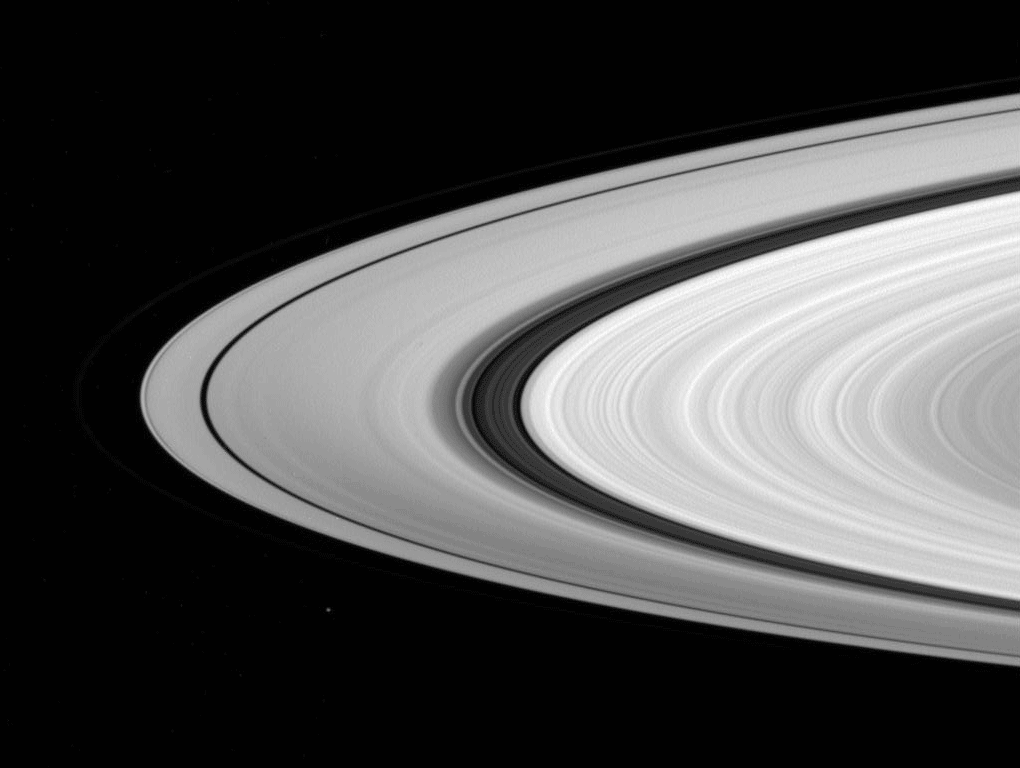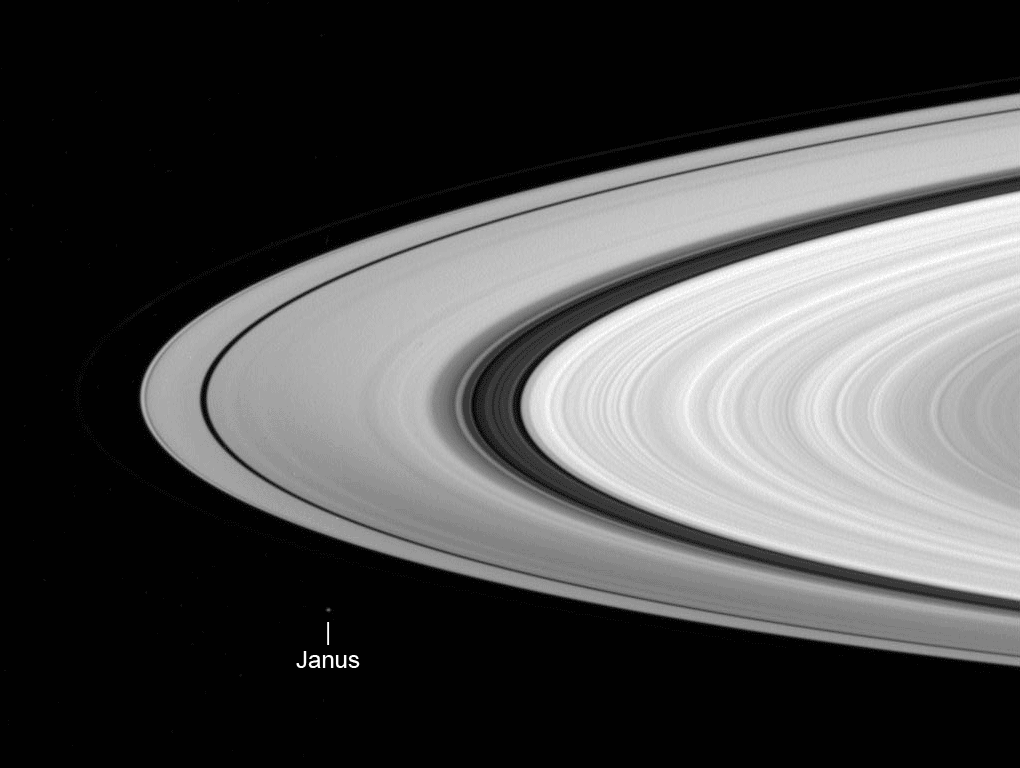Emily Lakdawalla • Jan 26, 2007
A cool Cassini ring plane crossing animation
Another recent, cool set of images that came down from Cassini was a series taken last week as the spacecraft crossed the ring plane. This happens twice every orbit. The animation below begins with Cassini below the ring plane, seeing the rings from their sunlit side, and continues above the ring plane, from the shadowed side. There are a million things going on in this animation, some of which I'll explain below, but first I'll let you enjoy the movie. It was assembled by Gordan Ugarkovic. The whole thing is 600k (2 Mb if you enlarge it), so be patient while it loads.

I'll explain the viewing geometry first. Remember that Cassini is in orbit around Saturn, and its orbit is presently tilted almost 60 degrees to the plane of Saturn's rings. This orbit gives Cassini's nice views of Saturn's rings from both above and below the ring plane; the orbiter dives through the ring plane twice each orbit. One is an ascending ring plane crossing -- from south to north, sunlit to shadowed side of the rings -- and one is a descending ring plane crossing. The January 17 ring plane crossing was an ascending one, coming from below to above the ring plane, at a distance of roughly 900,000 kilometers from Saturn, which is outside the orbits of most of the iceball moons but inside Titan's orbit.
With this geometry, as the animation begins, Cassini is seeing the lit side of the rings. You can tell because of foreshortening that the near side of the rings is at the top of the view. From this perspective, the rings are rotating clockwise. We are seeing mostly the A and B rings, separated by the dark, banded Cassini division. You can easily see the wider Encke and narrower Keeler gaps near the outer edge of the A ring. Staring at the rings for a while, you may also notice some spokes in the B ring at the beginning of the animation. As Cassini swoops upward toward the ring plane, the rings narrow until they appear almost as a line, then they widen again after Cassini crosses to the shadowed side.
Suddenly, the brightnesses of the rings reverse. The opaque B ring looks almost black, because little sunlight gets through. The Cassini division is very bright, because although it's transparent it has quite a lot of dust, which scatters light forward to Cassini's cameras from this point of view. You can also see a little bit of the outer edge of the C ring, at the right side of the image -- it looks bright for the same reasons that the Cassini division does. And you can also now see the F ring as a very thin line outside the A ring. It, too, is dusty and is best seen when lit from behind, the way you see dust motes in a sunbeam. Now that Cassini is on the north side of the rings, the rings appear to be rotating counterclockwise.
Another thing you'll notice as the animation repeats are two bright dots crossing the field of view. Those are moons, of course; first Enceladus crosses from left to right, and then Mimas, from right to left. Enceladus is closer to us than the rings are; Mimas is on the far side of the rings. But if you look closer, you can actually see four more moons: Janus, Epimetheus, Prometheus, and Pandora. Epimetheus, Prometheus, and Pandora are on the far side of the rings as Cassini comes up from below; they all reach the left edge pretty close to the time that Cassini crosses the ring plane; and they are on the near side of the rings as Cassini rises above the shadowed side of the rings. I made an annotated version of the animation so you can see all the moons in action.
I could stare at this for hours!
Support our core enterprises
Your support powers our mission to explore worlds, find life, and defend Earth. You make all the difference when you make a gift. Give today!
Donate

 Explore Worlds
Explore Worlds Find Life
Find Life Defend Earth
Defend Earth


